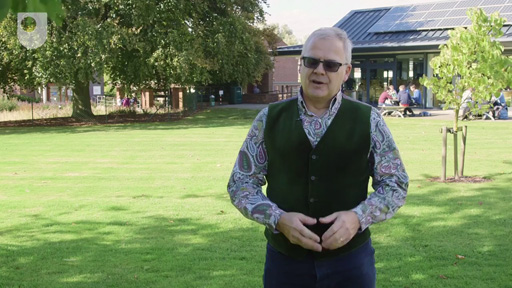5.2 Use of learning analytics in SoTL
Although learning analytics are a powerful data-set, they don’t provide the full suite of information that impacts student success (EDUCAUSE, 2020). Frequently missing are factors that are most impactful to learning, such as family and caring responsibilities, access to internet and equipment, undeclared disabilities, employment status or work schedules.
There are case studies on the use of learning analytics in SoTL inquiries in the SoTL Annotated Literature Review [Tip: hold Ctrl and click a link to open it in a new tab. (Hide tip)] , compiled by Nicola Simmons at Canada’s Brock University, and in Hian and Chong, 2014; Alizadeh, 2018; and in Bronnimann et al., 2018. You may like to look them up for inspiration.
Activity 7 Assessment analytics of student engagement
In this 3 minutes and 57 seconds video, Andrew Norton, an eSTEeM project leader, discusses his SoTL project on an OU module, S217 Physics: from classical to quantum.

Transcript: Video 6 Assessment analytics of student engagement with online quizzes
Watch the video and then answer the questions that follow:
- a.What role did learning analytics play in the design of Andrew’s SoTL inquiry?
- b.Which research method did Andrew apply alongside learning analytics in his SoTL inquiry?
- c.What changes did Andrew make, based on the outcomes of this SoTL inquiry?
- d.How is Andrew evaluating the efficacy of the changes he has made?
Discussion
The answers to the questions are as follows:
- a.In the video, Andrew discusses how learning analytics helped him to determine how students were engaging with the online quizzes and whether the student engagement patterns were as intended by the module team. Andrew noticed that students were not interacting with the quizzes in advance of attempting the Tutor Marked Assignment (TMA), but were only doing so when prompted by the self-reflection question in each TMA.
- b.Andrew conducted telephone interviews as a part of his SoTL inquiry for investigating the reasons for students’ usage patterns.
- c.Based on the SoTL inquiry’s outcomes, Andrew has put explicit time-slots for each of the quizzes into the study calendar. The self-reflection questions in the Tutor Marked Assignment have also been changed to encourage engagement with the quizzes prior to attempting the knowledge-based questions.
- d.In the video, Andrew says how he is using learning analytics to evaluate the efficacy of the changes that they have made in response to the SoTL inquiry.
If you are interested in knowing more about this project, the project description and accompanying report and resources are on eSTEeM’s website: Assessment analytics of student engagement with, and performance on, S217 online quizzes.
In the next section, you will learn about the ethical considerations of using learning analytics in SoTL projects.
